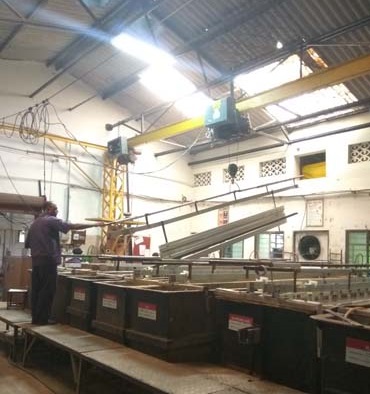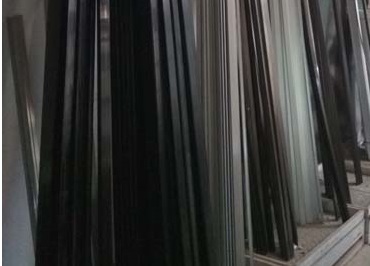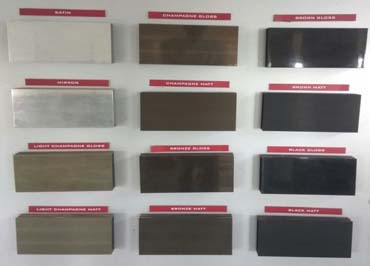
Anodised aluminium is now fashionable as a design statement. Crystal Industries offers a wide range of Anodising treatment options.
Available colours range from Satin, Champagne Gloss, Brown Gloss, Mirror, Champagne Matt, Brown Matt, Light Champagne Gloss, Bronze Gloss, Black Gloss, Light Champagne Matt, Bronze Matt, Black Matt.
To protect against corrosion and improve wear resistance as well as providing a wide range of surface finishes suitable for almost all architectural applications.
Anodizing is a multi step process whereby aluminum is electrochemically processed to form a layer of aluminum oxide (anodic) coating which protects the aluminum beneath. The coating can also be cosmetically enhanced by dying it as a step in the anodizing process. Surface cleanliness and preparation is the key to good anodizing results.
Anodizing is accomplished by immersing the aluminum into an acid electrolyte bath and passing an electric current through the medium. A cathode is mounted to the inside of the anodizing tank; the aluminum acts as an anode, so that oxygen ions are released from the electrolyte to combine with the aluminum atoms at the surface of the part being anodized. Anodizing is, therefore, a matter of highly controlled oxidation—the enhancement of a naturally occurring phenomenon.


In general, anodizing is less expensive than painting.
Anodizing is better for aluminum in high traffic areas where the coating is subject to physical abuse and abrasive cleaners.
Anodizing cannot peel off. The coating is actually part of the metal.
Anodizing is unaffected by sunlight. All organic coatings will eventually fail due to exposure to ultra-violet light.
Anodizing gives aluminum a deeper, richer metallic appearance than is possible with organic coatings. This is because an anodized coating is translucent, and one can see the base metal underneath the coating.